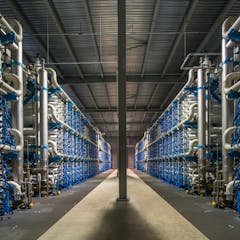
Articles on Drought
Displaying 101 - 120 of 615 articles

Worsening droughts and flooding likely threaten the future of cotton farming – by far the most important crop in the basin.

The water shortage on the old continent, the most intense in recent centuries, is due to the expansion of the Azores anticyclone. Its effects are becoming increasingly apparent.

New research shows Australia experienced a number of megadroughts in the last 1,000 years, We may be underestimating the severity of drought in Australia’s future.

New research traces the effect of drought on red kite chicks born during particularly dry years.

The role of beavers in safeguarding against our heating climate has become an interesting point of discussion. But just how important remains subject to debate.

Unless action is taken, the UK will be unable to supply its own water needs in the future – we should look to water-scarce regions such as California for inspiration.

Nearly 97% of the world’s water is in the oceans, but desalination is no magic bullet for water-stressed coastal cities.

As water dripped in a remote cave, it left behind evidence of every monsoon season for a millennium. Scientists say it holds a warning for a country about to become the most populous on Earth.

A couple weeks of rain doesn’t make up for months of dry weather.

La Niña is officially here for the third year in a row. You probably associate it with flooding, but how might it affect future drought and bushfires? And could a fourth La Niña be possible?

Gas that is burned now to replace German coal or French nuclear, is gas that cannot be stored for the winter ahead.

Climate change will increase the frequency of both floods and droughts in Pakistan. To address these challenges, enhancing infrastructure, building dams and educating the public are necessary.

A project to transcribe Dutch colonial records of the weather in Cape Town can benefit modelling of future climate scenarios and assist in forecasting weather now.

Strikes, climate change and the cost of living are among factors that will affect product availability this winter.

Drinkable water resources are becoming increasingly scarce. Are technologies such as desalination capable of averting such a crisis?

The flooding in Pakistan is the latest in a sequence of exceptional disasters in the Northern Hemisphere. How much is climate change to blame?

The world’s great rivers are see-sawing from trickles to floods.

China is in the midst of a devastating heatwave and drought. This has thrown the nation into an electricity crisis. And China has doubled down on coal investments to meet demand.

Paris successfully took water back into public ownership. There is growing evidence to suggest England should do the same.

Storms and flash floods often follow a heatwave.
